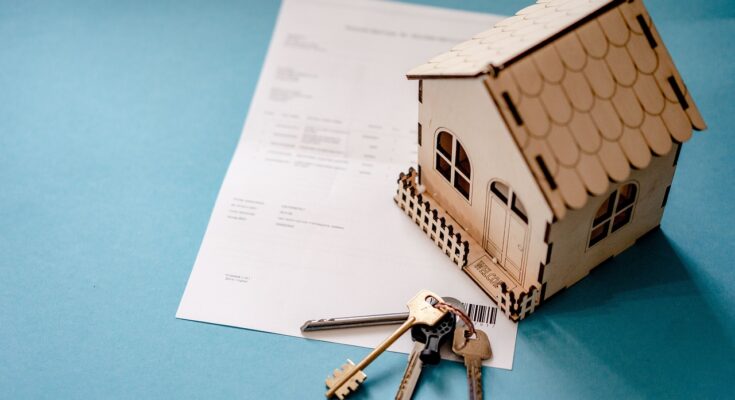ZonaJakarta So you’ve decided it’s time to stop renting and start owning. Maybe you’re dreaming of a cozy starter home in the suburbs, or a fixer-upper with charm and potential. Whatever your vision is, one thing is for sure: if you’re buying a home in the U.S. for the first time, the words “mortgage rates” are about to become a big part of your vocabulary.
And if you’re on a tight budget—which most first-time buyers are—you’re probably wondering: How can I get the cheapest mortgage available?
Here’s your no-fluff, beginner-friendly guide to navigating the mortgage market without losing your mind—or your savings.
Step 1: Understand What a Mortgage Really Is
Let’s start at the very beginning. A mortgage is basically a long-term loan from a lender (usually a bank or credit union) that helps you buy a home. You pay it back—typically over 15 to 30 years—with interest. The lower that interest rate, the cheaper your mortgage will be in the long run.
Sounds simple, right? But here’s where things get tricky: the mortgage world is full of terms, options, and hidden costs that can either save you thousands or cost you more than you planned.
Step 2: Know What Impacts Your Mortgage Rate
Getting the cheapest mortgage doesn’t just mean shopping around. It starts with you. Your financial profile plays a big role in what kind of loan you qualify for. Here’s what lenders look at:
– Credit Score: Higher scores (ideally 700 and above) get better rates.
– Down Payment: The more you can put down (20% is ideal), the less you’ll pay over time.
– Debt-to-Income Ratio (DTI): This is how much debt you carry versus how much you earn. Lower is better.
– Employment & Income Stability: Lenders love consistency.
So before you even apply, work on boosting your credit, paying down debts, and saving as much as possible for your down payment.
Step 3: Explore Loan Types—and Know Which Ones Are Cheapest
There’s no one-size-fits-all mortgage. In fact, choosing the right type can significantly cut your costs. Here’s a quick breakdown of common (and often affordable) options:
– Conventional Loans: These are the most common. If your credit and income are solid, you can get a competitive rate—especially with a 20% down payment.
– FHA Loans: Great for first-time buyers with low credit or limited savings. Backed by the government, FHA loans allow down payments as low as 3.5%, though they require mortgage insurance.
– VA Loans: If you’re a veteran or active military, these are hard to beat. No down payment. No mortgage insurance. Very competitive rates.
– USDA Loans: Designed for rural and suburban homebuyers. You may qualify for zero-down financing if you meet the income and location criteria.
Pro Tip: FHA, VA, and USDA loans are often your cheapest ticket into homeownership if your credit isn’t perfect or you don’t have 20% saved.
Step 4: Shop Around (Yes, Really!)
This step is where the real savings happen—and where most people mess up. Don’t settle for the first lender your real estate agent recommends. Rates and fees vary wildly between banks, credit unions, and online lenders.
Instead, get pre-qualified or pre-approved by a few lenders, compare offers side by side, and pay attention to these things:
– Interest rate
– APR (Annual Percentage Rate)
– Points and lender fees
– Closing costs
Even a 0.5% difference in interest can save you tens of thousands over time.
Step 5: Lock in the Rate at the Right Time
Mortgage rates fluctuate like gas prices. When you find a good rate, ask about “locking it in.” A rate lock keeps your offer steady even if rates go up before your closing date.
Just make sure the lock period (usually 30–60 days) matches your home-buying timeline.
Step 6: Watch Out for Sneaky Fees
Some mortgages come with upfront charges like discount points (where you pay to lower your rate), loan origination fees, or prepayment penalties.
Ask questions like:
– “What are all the fees I’ll be charged?”
– “Can I skip mortgage insurance if I put down more?”
– “What’s the total cost over the life of the loan?”
This keeps lenders honest—and your budget on track.
Bonus Tips for Super Savers:
Use a mortgage broker if you want someone to compare rates across lenders for you (just be aware of broker fees).
Look into first-time homebuyer grants or state-funded assistance programs. Many offer help with down payments or closing costs.
Consider a shorter loan term (like 15 years) if you can afford slightly higher monthly payments. You’ll pay less interest over time.
Final Thoughts: You Don’t Need to Be Rich to Buy a Home—Just Smart
Scoring the cheapest mortgage in the U.S. isn’t about luck. It’s about preparation, knowing your options, and not rushing into the first offer you see. You can own a home on a budget—as long as you’re willing to do a little digging, ask the right questions, and be patient with the process.
After all, the goal isn’t just to buy a home—it’s to keep it, comfortably. (*)




